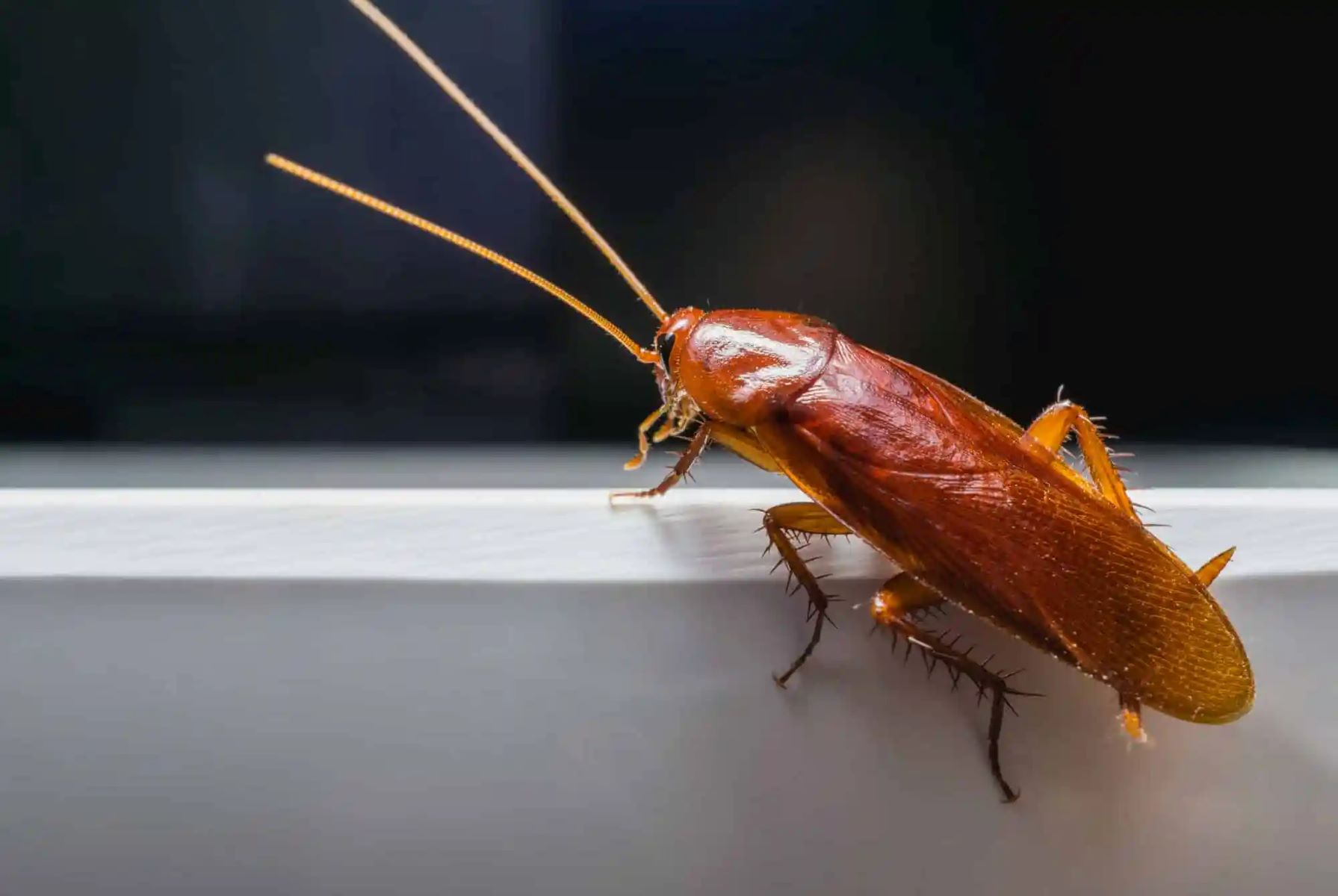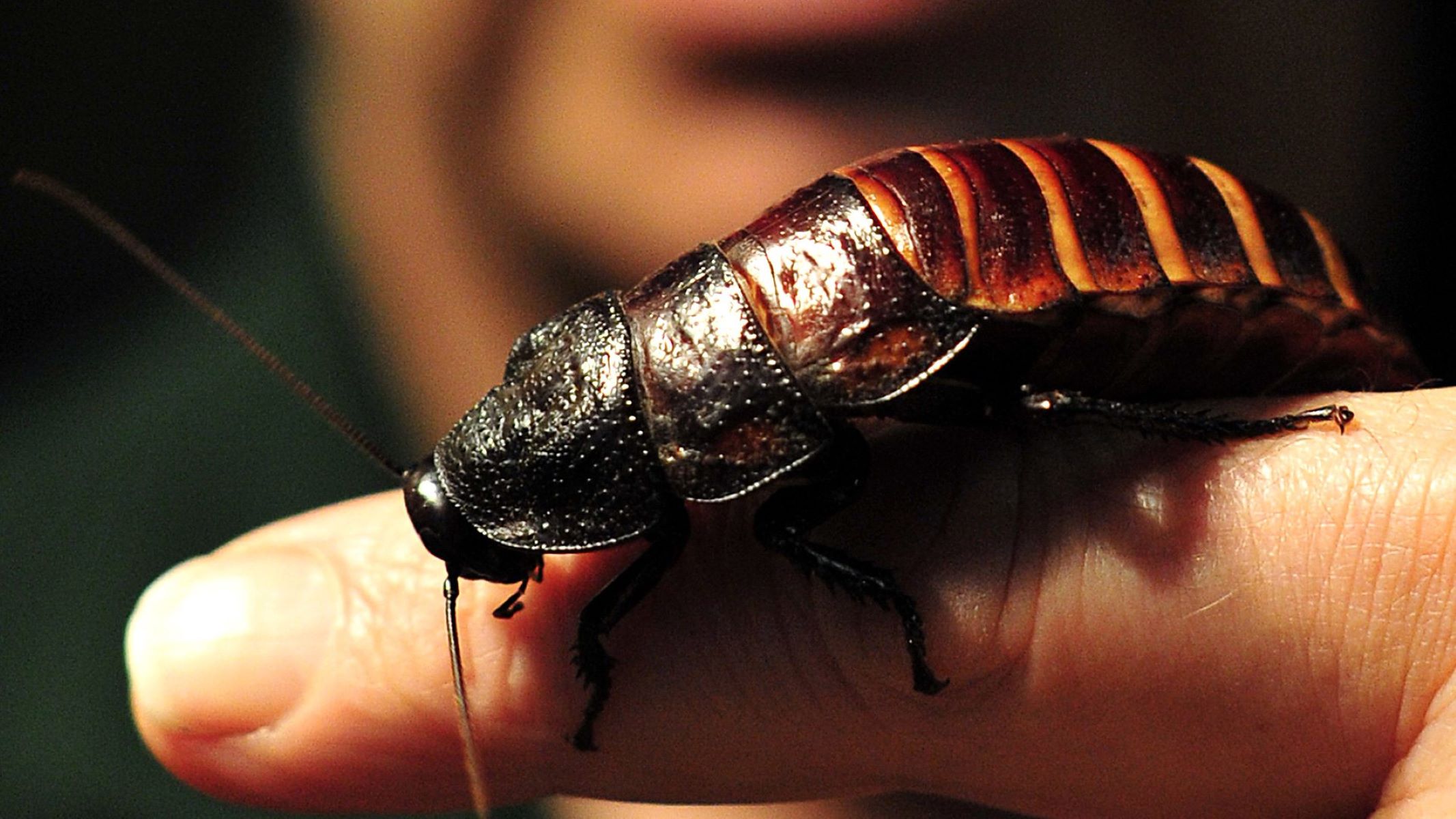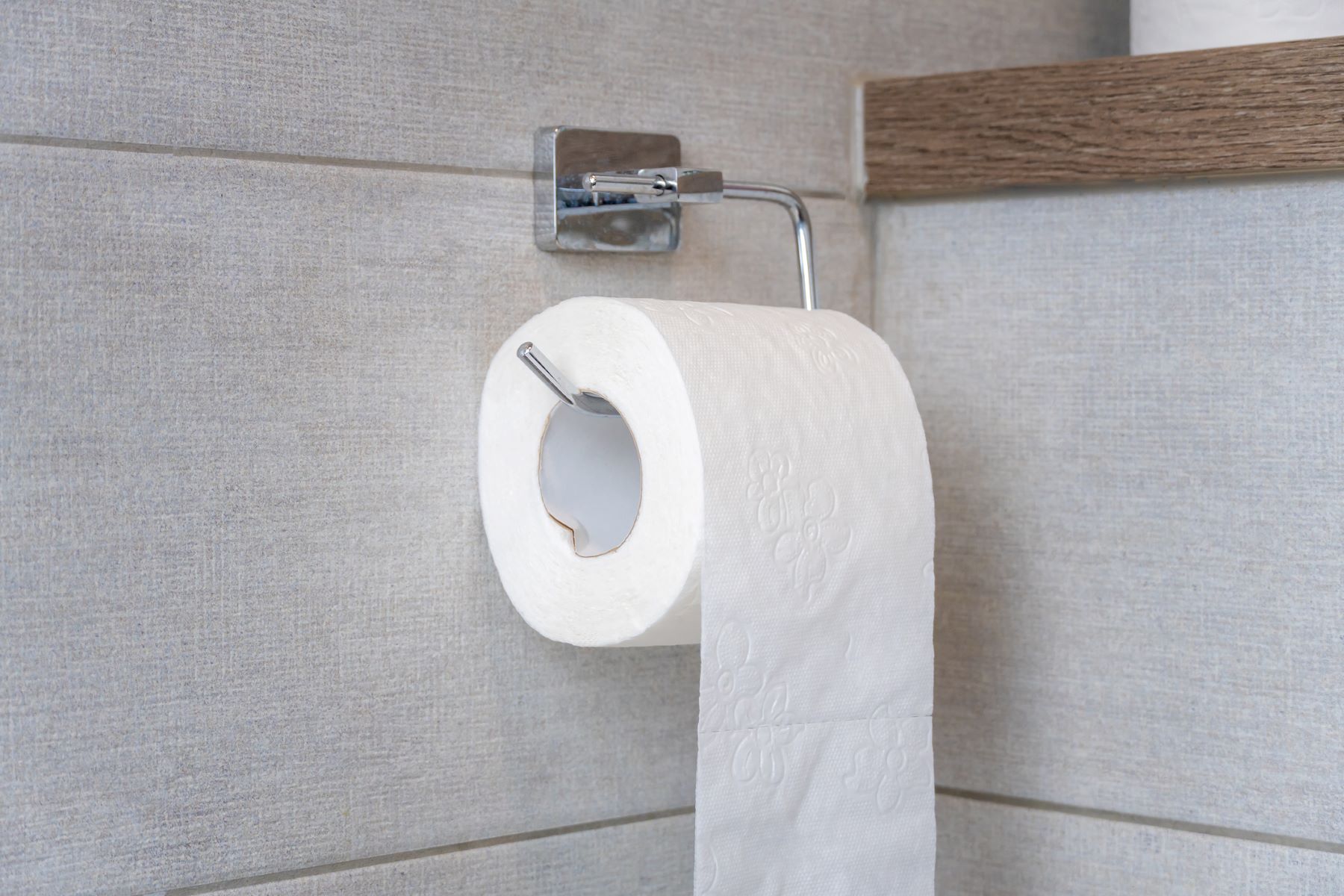Home>Home and Garden>Identifying And Eliminating Small Cockroaches In Your Home


Home and Garden
Identifying And Eliminating Small Cockroaches In Your Home
Published: February 19, 2024
Learn effective methods for identifying and eliminating small cockroaches in your home with our expert tips and advice. Keep your home and garden pest-free with our proven solutions.
(Many of the links in this article redirect to a specific reviewed product. Your purchase of these products through affiliate links helps to generate commission for Regretless.com, at no extra cost. Learn more)
Table of Contents
Introduction
Dealing with a small cockroach infestation can be a frustrating and unsettling experience for any homeowner. These resilient pests can quickly multiply and infiltrate various areas of your home, posing a threat to both your property and your family's well-being. However, with the right knowledge and proactive measures, you can effectively identify and eliminate small cockroaches from your living space.
Understanding the behavior and characteristics of small cockroaches is crucial in addressing an infestation. By recognizing the signs of their presence and learning how to identify them, you can take targeted steps to eradicate these unwelcome intruders. Furthermore, implementing preventive measures can help safeguard your home against future infestations, providing long-term relief and peace of mind.
In this comprehensive guide, we will delve into the world of small cockroaches, exploring their habits, identifying features, and the telltale signs of an infestation. We will also discuss effective strategies for eliminating small cockroaches from your home and outline preventive measures to minimize the risk of future encounters. By the end of this article, you will be equipped with the knowledge and tools to tackle small cockroach infestations with confidence, ensuring a clean and pest-free living environment for you and your loved ones.
Understanding Small Cockroaches
Small cockroaches, also known as German cockroaches, are among the most common household pests worldwide. These resilient insects thrive in warm and humid environments, making residential spaces an ideal habitat for their proliferation. Measuring about half an inch in length, small cockroaches have a light brown or tan coloration, with two distinctive dark stripes running parallel along their back. Their compact size and rapid reproductive rate enable them to establish large populations within a short period, posing a significant challenge for homeowners.
These pests are nocturnal by nature, preferring to remain hidden during the day and emerging under the cover of darkness to forage for food and water. Their secretive behavior often allows them to evade detection until the infestation becomes more severe. Small cockroaches are omnivorous scavengers, feeding on a wide range of organic matter, including food scraps, grease, and even household items such as glue and soap. Their adaptable diet and ability to survive on minimal resources contribute to their resilience and ability to thrive in various environments.
In addition to their rapid reproduction and dietary habits, small cockroaches are adept at finding shelter in confined spaces, such as cracks, crevices, and the interior of appliances. Their ability to squeeze through tiny openings and their preference for warm, secluded areas make them elusive and challenging to eradicate once they have established a presence in a home.
Understanding the behavior and characteristics of small cockroaches is essential for effective pest management. By gaining insight into their habits, appearance, and survival instincts, homeowners can develop targeted strategies to combat infestations and prevent future encounters. In the following sections, we will explore the signs of small cockroach infestations, methods for identifying these pests, and practical steps for eliminating them from your home.
Signs of Small Cockroach Infestation
Identifying the presence of small cockroaches in your home requires keen observation and an understanding of the telltale signs associated with their infestation. By recognizing these indicators early on, homeowners can take prompt action to address the issue before it escalates. Here are the key signs to watch for:
-
Foul Odor: Small cockroaches emit a distinct, unpleasant odor that intensifies as their population grows. The pungent, musty scent is often noticeable in areas where the pests congregate, such as kitchens, bathrooms, and hidden crevices.
-
Droppings: Small cockroach droppings resemble small, dark specks or pellets and are commonly found in areas frequented by the pests, such as behind appliances, in cabinets, and along baseboards. The presence of these droppings indicates active roach activity and potential nesting sites.
-
Egg Casings: Small cockroach egg casings, also known as oothecae, are often discovered in secluded areas. These elongated, brown casings contain multiple eggs and serve as a clear indication of a breeding population within the vicinity.
-
Smear Marks: Small cockroaches leave smear marks behind as they navigate through the home. These dark, irregular streaks may be visible on walls, floors, and surfaces, particularly in areas where the pests travel in search of food and shelter.
-
Visible Roaches: Spotting live small cockroaches, especially during nighttime, is a definitive sign of an infestation. These pests are adept at remaining hidden, so their presence in plain sight often indicates a substantial population within the property.
-
Damage to Paper and Fabric: Small cockroaches are known to feed on a variety of materials, including paper, cardboard, and fabric. Therefore, the presence of chewed or damaged items in storage areas can signal an infestation.
-
Unusual Noises: In some cases, homeowners may detect faint rustling or clicking sounds, particularly in quiet environments during the night. These noises can indicate the movement and activity of small cockroaches within wall voids or other concealed spaces.
By remaining vigilant for these signs, homeowners can promptly address small cockroach infestations, preventing potential health hazards and property damage associated with these resilient pests. Identifying these indicators early on is crucial for implementing effective eradication measures and safeguarding the home from further infestations.
Identifying Small Cockroaches
Identifying small cockroaches, commonly known as German cockroaches, is essential for implementing targeted pest control measures. These pests are characterized by their compact size, ranging from 1/2 to 5/8 inches in length, and their light brown or tan coloration. One of the most distinctive features of small cockroaches is the two parallel dark stripes running down their back, which set them apart from other cockroach species. These stripes serve as a key identifying characteristic, aiding in the differentiation of small cockroaches from similar-looking pests.
In addition to their physical attributes, small cockroaches exhibit rapid and erratic movements, especially when startled or exposed to light. Their agile and evasive behavior makes them adept at escaping detection and complicates efforts to capture or eliminate them. Despite their small size, these pests are resilient and can quickly multiply, leading to widespread infestations if left unchecked.
When attempting to identify small cockroaches, it is important to consider their preferred habitats and activity patterns. These pests are nocturnal by nature, preferring to remain hidden during the day and emerging under the cover of darkness to forage for food and water. As a result, homeowners may encounter small cockroaches in areas such as kitchens, bathrooms, and secluded spaces near food sources and moisture.
Furthermore, small cockroaches are skilled at finding shelter in confined spaces, such as cracks, crevices, and the interior of appliances. Their ability to squeeze through tiny openings and their preference for warm, secluded areas make them elusive and challenging to eradicate once they have established a presence in a home.
In summary, identifying small cockroaches involves recognizing their physical characteristics, including size, coloration, and distinctive markings, as well as understanding their behavior and preferred habitats. By familiarizing themselves with these key identifiers, homeowners can effectively differentiate small cockroaches from other pests and take targeted action to address infestations. This knowledge is instrumental in implementing tailored pest control strategies and safeguarding homes from the detrimental effects of small cockroach infestations.
Eliminating Small Cockroaches
Eliminating small cockroaches from your home requires a comprehensive approach that targets both the existing population and potential nesting sites. By implementing effective eradication strategies, homeowners can significantly reduce the presence of these resilient pests and create a healthier living environment for their families. Here are key steps to effectively eliminate small cockroaches:
-
Sanitation and Hygiene: Maintaining a clean and hygienic living space is crucial in deterring small cockroaches. Regularly clean and disinfect kitchen surfaces, appliances, and areas prone to moisture accumulation. Ensure that food crumbs, spills, and grease are promptly cleaned up to eliminate potential food sources for the pests.
-
Sealing Entry Points: Small cockroaches can enter homes through tiny cracks, gaps, and openings. Seal off entry points using caulk or weather stripping to prevent their ingress. Pay particular attention to areas around pipes, vents, and utility entrances, as these serve as common entry points for pests.
-
Eliminating Hiding Places: Reduce small cockroach hiding spots by decluttering and organizing storage areas. Seal and store food items in airtight containers to prevent access by pests. Additionally, minimize paper and cardboard clutter, as small cockroaches are known to feed on these materials.
-
Targeted Treatments: Utilize targeted insecticides and baits specifically designed for small cockroach eradication. Place bait stations in areas of roach activity, such as kitchens and bathrooms, to attract and eliminate the pests. Additionally, apply residual insecticides in cracks, crevices, and other potential harborage sites.
-
Professional Pest Control: In severe infestations or persistent small cockroach problems, seeking professional pest control services may be necessary. Pest management professionals can conduct thorough inspections, implement targeted treatments, and provide ongoing monitoring to ensure effective eradication and prevent future infestations.
-
Regular Monitoring and Maintenance: After implementing eradication measures, regularly monitor for small cockroach activity and maintain a proactive approach to pest control. Address any signs of resurgence promptly and continue practicing good sanitation and hygiene habits to minimize the risk of reinfestation.
By following these proactive measures and targeted eradication strategies, homeowners can effectively eliminate small cockroaches from their living spaces and prevent future infestations. Creating an inhospitable environment for these pests through sanitation, exclusion, and targeted treatments is essential in achieving long-term relief from small cockroach infestations.
Preventing Small Cockroach Infestations
Preventing small cockroach infestations requires a proactive and multifaceted approach aimed at creating an inhospitable environment for these resilient pests. By implementing preventive measures, homeowners can significantly reduce the risk of small cockroach encounters and safeguard their living spaces from infestations. Here are key strategies for preventing small cockroach infestations:
-
Maintain Cleanliness: Regular cleaning and sanitation play a pivotal role in deterring small cockroaches from infesting homes. Keep kitchen surfaces, appliances, and dining areas free of food crumbs, spills, and grease. Additionally, promptly dispose of garbage and maintain cleanliness in storage areas to eliminate potential food sources and hiding spots for small cockroaches.
-
Eliminate Moisture: Small cockroaches thrive in humid environments, making moisture control essential for prevention. Repair any leaks in plumbing fixtures, faucets, and pipes to minimize moisture accumulation. Ensure proper ventilation in bathrooms, kitchens, and other areas prone to humidity to create an inhospitable environment for small cockroaches.
-
Seal Entry Points: Prevent small cockroaches from infiltrating your home by sealing off potential entry points. Use caulk to fill gaps around windows, doors, and utility entrances. Inspect and repair damaged screens, vents, and utility penetrations to prevent pests from gaining access to the interior of the property.
-
Declutter and Organize: Reduce potential hiding spots for small cockroaches by decluttering and organizing storage areas. Minimize paper and cardboard clutter, as these materials can serve as food sources for pests. Store items in sealed containers and regularly inspect and clean storage areas to deter small cockroach infestations.
-
Regular Inspections: Conduct routine inspections of your home to identify and address potential small cockroach entry points and nesting sites. Pay particular attention to areas such as kitchens, bathrooms, and utility rooms, where small cockroaches are likely to seek food, water, and shelter. By identifying and addressing vulnerabilities early on, homeowners can prevent infestations from taking hold.
-
Educate and Raise Awareness: Educate family members and household occupants about small cockroach prevention and the importance of maintaining a clean and hygienic living environment. Encourage proactive habits such as promptly cleaning up spills, storing food properly, and promptly addressing any signs of pest activity.
By integrating these preventive measures into your household routine, you can create an environment that is less conducive to small cockroach infestations. Consistent implementation of these strategies will not only reduce the risk of infestations but also contribute to a healthier and more comfortable living space for you and your family.
Conclusion
In conclusion, addressing small cockroach infestations requires a combination of vigilance, proactive measures, and targeted strategies. By understanding the behavior, signs, and identifying features of small cockroaches, homeowners can effectively combat infestations and prevent future encounters. The ability to recognize the signs of small cockroach infestations, such as foul odors, droppings, egg casings, and visible pests, empowers individuals to take timely action and implement eradication measures.
Furthermore, the process of identifying small cockroaches involves familiarizing oneself with their physical characteristics, including size, coloration, and distinctive markings, as well as understanding their behavior and preferred habitats. This knowledge is instrumental in implementing tailored pest control strategies and safeguarding homes from the detrimental effects of small cockroach infestations.
Eliminating small cockroaches from the home necessitates a comprehensive approach that encompasses sanitation, targeted treatments, and professional pest control when necessary. By maintaining cleanliness, sealing entry points, and implementing targeted eradication measures, homeowners can significantly reduce the presence of small cockroaches and create a healthier living environment for their families.
Moreover, preventing small cockroach infestations involves proactive measures such as maintaining cleanliness, eliminating moisture, sealing entry points, and conducting regular inspections. By integrating these preventive measures into household routines, individuals can create an environment that is less conducive to small cockroach infestations, contributing to a healthier and more comfortable living space for their families.
In essence, by equipping themselves with the knowledge and tools to identify, eliminate, and prevent small cockroach infestations, homeowners can effectively safeguard their living spaces and enjoy a pest-free environment. Through a proactive and informed approach, individuals can mitigate the risks associated with small cockroach infestations, ensuring a clean, healthy, and comfortable home for themselves and their loved ones.














